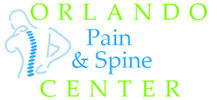Knee Arthritis Facts & Information
Healthy joints are remarkable pieces of nature’s engineering, moving with almost friction-less ease. But the inflammation in arthritic joints can render even small movements difficult and painful.
Although there is no cure for most types of arthritis, there are treatments that can help you significantly reduce the pain and preserve existing joint function. Our physicians can help you discover the best way to manage knee arthritis and get you back to the everyday activities you enjoy.
How & Why Knee Arthritis Develops
Osteoarthritis, the most common type of arthritis, is the breakdown of cartilage that keeps bones from rubbing together. It most commonly occurs in the weight-bearing joints, such as the hips and knees, and can be made worse by obesity.
As the cartilage wears away, the bone underlying it degenerates, and other parts of the joint, such as ligaments and muscles, become altered as well. Usually appearing at middle age and developing slowly, osteoarthritis is characterized by pain that gets worse as the day goes on, stiffness and decreased motion, swelling in the joint, sounds (like clicking or crunching noises) when moving the affected joint and visible deformity of the joint.
Rheumatoid arthritis (RA) is another condition that also causes inflammation of the joint and surrounding tissues. However, unlike osteoarthritis, RA can also affect the organ systems of the body. Rheumatoid arthritis is an autoimmune disease that occurs when the body mistakenly attacks its own tissues and organs. Other less common causes of joint arthritis may include infection and gout.
Symptoms
The most common symptoms of patients with knee arthritis include:
• Stiffness
• Decreased range of motion
• Swelling in the joint
• Clicking or crunching noises when moving
Diagnosis
Since hip and knee arthritis can be caused by a number of factors – from wear and tear, to infection, to immune disorders – an accurate diagnosis is the key to determining the most appropriate treatment plan. To reach an accurate diagnosis of knee arthritis, the following might be completed by one our physicians:
• Complete medical history of your symptoms – including location and pattern
• A comprehensive physical examination will be performed
• State-of-the-art imaging technologies may also be used to get a better look at the joint and surrounding tissues
The type and extent of treatment often depends on factors such as your age, activity level, overall health and severity of the condition.
Possible Treatments:
Epidural Nerve Block
An epidural nerve block is the injection of corticosteroid medication into the epidural space of the spinal column. This space is located between the dura (a membrane surrounding the nerve roots) and the interior surface of the spinal canal formed by the vertebrae.
After a local skin anesthetic is applied to numb the injection site, a spinal needle is inserted into the epidural space. To ensure accuracy and safety, our physicians perform the procedure under fluoroscopic (x-ray) guidance, using a contrast agent to confirm needle placement. Local anesthetic and corticosteroid anti-inflammatory medication are delivered into the epidural space to shrink the swelling around nerve roots, relieving pressure and pain.
Platelet Rich Plasma (PRP Therapy)
PRP is a next-generation injection procedure. We utilize the nation’s most advanced, concentrated and pure form of platelet rich plasma, ensuring the best possible patient outcomes. Our platelet rich plasma procedures incorporate significantly higher blood platelet concentrations and are much more pure than PRP offered at clinics utilizing a simple bedside centrifuge to process blood draws. The procedure typically takes a couple of hours, including preparation and recovery time. Performed safely in a medical office, PRP therapy relieves pain without the risks of surgery, general anesthesia, or hospital stays and without a prolonged recovery. In fact, most people return to their jobs or usual activities right after the procedure.
Prolotherapy
Prolotherapy is an innovative technique that relieves pain by directly impacting the underlying condition causing that pain. In contrast to many medical treatments that may provide only temporary benefits, this safe, proven treatment offers lasting relief. Many conditions respond well to prolotherapy, such as facet syndrome (back and neck arthritis), whiplash, joint sprains, degenerative disc disease, osteoarthritis, tennis elbow, sprains, chronic tendonitis, and more. Our board-certified pain specialists can determine if you are a candidate for this healing alternative and help you get your life back.
Stem Cell Therapy
Stem Cell Therapy as an alternative solution to invasive surgery for patients suffering from a wide range of degenerative conditions and injuries. The Regenexx Stem Cell Therapy protocol produces the highest stem cell concentrations possible. All procedures utilize advanced imaging guidance to ensure the stem cells are delivered precisely to the area in need to assist healing in the damaged tissues.
